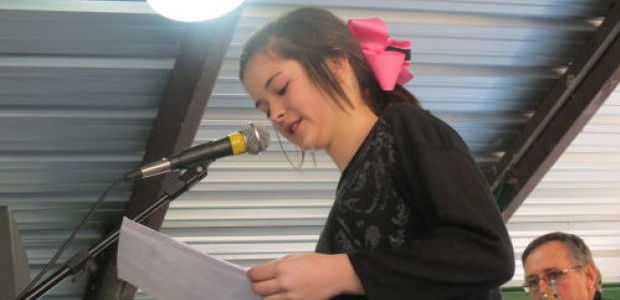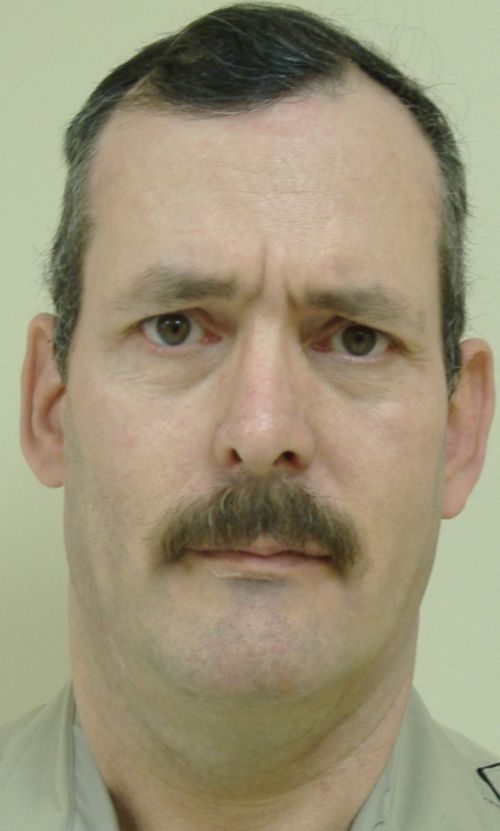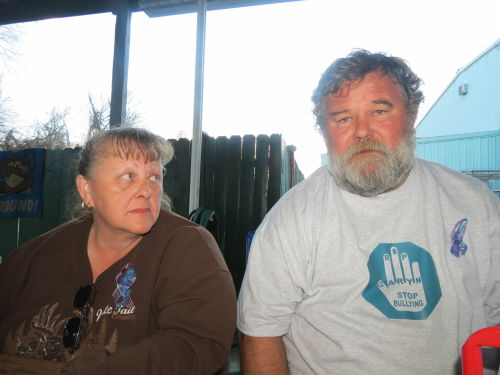
Boy’s death sparks bully furor
January 29, 2014
Cop’s widow files lawsuit
January 29, 2014When Gaye Cheramie learned that one of her school’s 1,500 students committed suicide at his family’s Galliano home, the South Lafourche High principal convened a meeting with administrators and teachers.
She also called the boy’s family and expressed condolences.
The death occurred on a Friday night, the meeting was on a Saturday and students were not returning until the Tuesday, because of the Martin Luther King holiday.
“This was one of our children,” Cheramie said. “One of our kids, a member of our school community.”
The school and the Lafourche Parish district, of which it is a component, did not have a specific plan for dealing with such an emergency, but its crisis plan and references it contained would be a help. There was nothing the school could do for their student, 15-year-old Garyn Strong, at that point. The priority involved how best to deal with the student body, particularly its members who knew Garyn and would be hardest hit by the loss.
Decisions were made with an eye toward protecting against copycats – an issue that arises for schools in such situations – and keep the educational mission on point. Some decisions and a series of unfortunate circumstances led to ill feelings on the part of students and parents. That Garyn’s death was publicized as the result of an alleged history of unaddressed bullying, an avalanche of social media posts and other factors resulted in fractured relations between the school and some students, as well as elements of the community at large.
The social media comments began even before the educators met, as word of the tragedy buzzed through the invisible “bayou telegraph.”
“We must not comment back to any comments that are placed on social media,” Cheramie’s Saturday memo to faculty states, noting that plans were made for social workers and psychologists to be present at school. Faculty were specifically ordered to “not engage in any discussions with students about the incident.”
Students would not be allowed to discuss “the situation” in their classrooms.
If a student appears upset, faculty were told, they should be directed to a counselor.
“We will not make any kind of announcements such as a moment of silence or funeral arrangements,” the memo states.
According to nationally recognized experts who routinely deal with grief at schools, that last directive is in keeping with best practices for educators when a death in the school community occurs.
But some of the other decisions that were made, or how faculty interacted with grieving or troubled students, remain subject to question.
“Unfortunately, most schools especially smaller schools do not have personnel that are experienced in responding to this, even though there is a wealth of information,” said Scott Poland, a psychologist who is founder of the National Emergency Assistance Team for the National Association of School Psychologists. He is also prevention director for the American Association of Suicidology.
“Shutting them down is not the answer,” said Poland, who gave a detailed student suicide presentation last week at LSU Shreveport. Poland did not wish to respond directly to steps South Lafourche did or did not take, but agreed to discuss what his own curriculums and writings suggest.
The concern that a student suicide can lead to others is totally valid, in his experience. Poland’s approach sees open – but controlled – discussion as an antidote.
“Monitor off-campus impromptu memorials,” Poland said. “It’s okay to do a little something at school. If kids want to talk, light a few candles, that’s OK.”
Students at South Lafourche said they felt teachers were erasing Garyn from the school by shutting down conversation. Ironically, Poland addressed that without being prompted.
“We have seen situations where students have said it was as if a classmate was erased, that we are not supposed to talk about him, to take his pictures from the yearbook,” Poland said. “We should monitor social networks to see what students are saying about this to each other, not to shut them down but figure out how much angst and emotion exists.”
Before students returned to school a local television station aired stories about Garyn’s death. It is unusual for traditional media to cover a teen suicide – or most others unless they occur in a public place or are otherwise newsworthy. That Garyn’s parents accuse the school of ignoring alleged bullying in his case crossed the threshold from private tragedy to public spectacle, inviting media coverage.
Poland has seen that scenario before, noting that in such cases where litigation is brought parents are rarely successful.
At the very least, some experts indicated, quiet announcements in individual classrooms could have been made about Garyn’s death, with limited discussions permitted if students pressed them. Ideally, it was suggested, a crisis team should have included counselors to be present in classrooms where children most affected were likely to be found.
South Lafourche’s ad hoc protocol resulted in teachers – with varying degrees of sensitivity – referring students to the counseling center if they appeared shaken.
In some cases students reported loving and compassionate treatment. One girl said she was greatly comforted by Cheramie herself. The student – in multiple interviews – said that when she reported for counseling at a different office she received little solace, but was questioned about the bullying Garyn allegedly was subjected to in life. School administrators questioned that account.
A close friend of Garyn’s – Mark Doiron – said he went to the counseling center and was well-treated. The focus, he said, was on his well-being, and he reported feeling better after talking with someone there.
Controversy sparked by news reports and local conversations as well as Facebook postings resulted in some accusations being made against educators that were not true.
One posting said students were suspended for wearing small anti-bullying ribbons to commemorate Garyn’s death, and was false. What did occur, administrators confirmed, was that a teacher misread the memo that specifically said students should be allowed to wear their ribbons and sent two students to the prinicipal’s office. They were returned to class and the teacher was admonished.
Likewise, reports that students were barred from wearing T-shirts commemorating Garyn were unfounded.
A memo from Cheramie reads specifically that the shirts were allowed because that day – the Friday following Garyn’s death – was “spirit day.”
Student angst over what they saw as an attempt to “erase” Garyn Strong was intensified, interviews indicate, by questioning of some students about Garyn, and the taking of written statements from them without parents being notified.
Civil liberties attorneys said schools can indeed take statements from students to indicate whether school policies were violated at some point in time; Some parents incorrectly assumed that it was not legal for the schools to do so.
Legal experts said that taking of statements is problematic only when schools are doing so as an agent of law enforcement.
Tragedies such as the one experienced at South Lafourche, experts said, can offer learning experiences for faculty and administrators.
A key point for communication, they agreed, is to point out that nobody can ever truly say what caused an individual to take their own life.
Suicide prevention toolkits, Poland said, are available for educators and can help them plan for future tragedies.
“Treat all the deaths the same,” Poland said. “Try not to glamorize but be there to help all the students with shock, confusion and guilt. Most of all attempts should be made to help everyone understand what can be done to prevent the next suicide.”
Thad and Maureen Strong at the Cut Off Youth Center, where a benefit for their family raised money following the suicide of their 15-year-old son Garyn.









